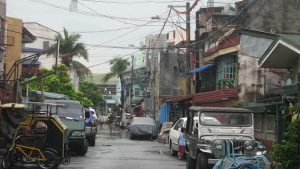Manila, the capital of the Philippines, is a large city with many different neighborhoods. It has very slums and very rich neighborhoods, with popular life and fine neighborhoods. The area of San Andres is small, but it is the second largest populated district in Manila after Tondo district, which is known for its severe congestion and poverty. San Andres district can be divided into two sectors, one east and one west, passing through the Osmania High Way Highway. Most of them are residents, and some sections are classified as commercial, but in whole they are residential neighborhoods. 
Most San Andres residents live above the poverty line, mostly settlers after World War II who came from different provinces. Indigenous people were middle or lower immigrant families who had previously settled in the Tondo district but had found Tondo is less suitable to raise their children, they moved to San Andres. The flow of settlers into San Andres was unregulated and uncontroled, resulting in a lack of urban planning as evidenced by irregular buildings, narrow roads, and houses clustered next to each other, which can be accessed only through narrow roads, leading to access difficulty of some services such as those required in emergencies.

